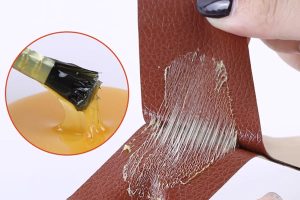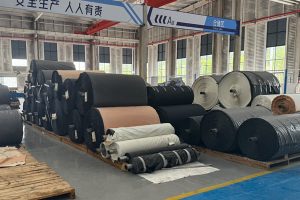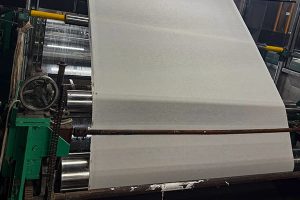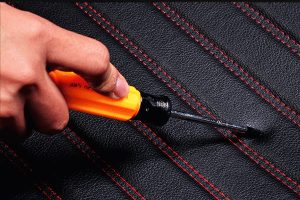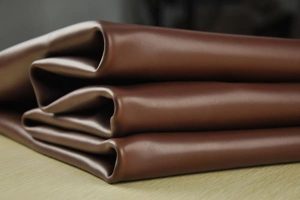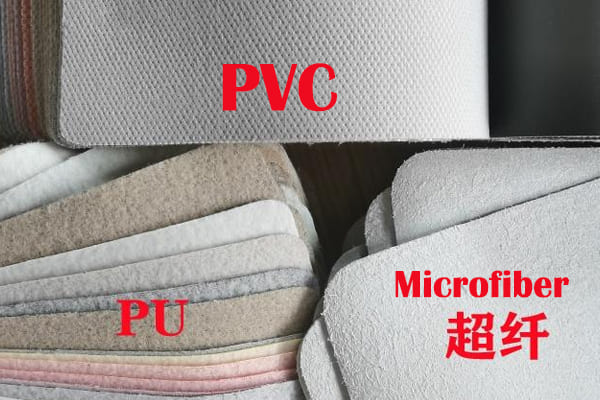
Ah, leather—the timeless material that makes everything look a little more luxurious, from your favorite armchair to that jacket you wear to feel like a rock star. But in today’s world, we’ve got options, and the big question is: Do you go for the classic, natural leather, or take a modern twist with microfiber leather? One comes from cows and centuries-old tanning traditions, while the other is whipped up in high-tech factories without harming a single animal (unless you count oil wells). Is microfiber leather just as good, or are we all pretending it’s the real thing? Let’s break it down and see which leather is worth its weight in… well, hides or high-tech fibers!
Natural vs. Synthetic: A Breakdown of Leather Types
The fundamental difference between microfiber leather and normal leather lies in their origins. Normal leather, also known as genuine leather, is derived from animal hides, typically cows, and goes through a tanning process to become the material we’re familiar with. This gives it a natural, organic quality that’s prized for its texture and durability. Microfiber leather, on the other hand, is a synthetic material created from ultra-fine polyester and nylon fibers, combined with a polyurethane (PU) coating. Designed to mimic the look and feel of real leather, microfiber leather offers a cruelty-free and more affordable alternative. It’s also more consistent in appearance, since it is manufactured, whereas normal leather can have natural imperfections due to its animal origin.
The Look and Feel: How Microfiber Leather Compares to the Real Deal
When it comes to appearance and texture, both microfiber leather and normal leather have their pros and cons. Normal leather often has a rich, unique texture that varies depending on the quality and treatment of the hide, which many consider to be more luxurious and authentic. Over time, it develops a patina, enhancing its character. Microfiber leather, while incredibly similar in appearance, tends to have a more uniform look and feel, since it’s machine-made. It closely mimics the softness and grain of real leather, but lacks the subtle imperfections and aging process that some people appreciate in genuine leather. However, microfiber leather is often preferred for its consistency and easy maintenance, making it ideal for those who want a leather-like appearance without the natural aging effects.
Durability Duel: Microfiber Leather vs. Normal Leather
When comparing durability, microfiber leather has some clear advantages over normal leather, especially when exposed to daily wear and tear. Microfiber leather is highly resistant to stretching, cracking, and fading, making it a long-lasting choice for items like furniture, car seats, and footwear. It is also water-resistant, which protects it from stains and moisture damage. Normal leather, while strong and durable, requires regular maintenance to keep it in top condition. It can be vulnerable to water damage, stains, and cracking if not properly cared for. That said, high-quality normal leather can outlast microfiber leather in the long term if treated with care, and it becomes softer and more comfortable with age. For those seeking a low-maintenance option, microfiber leather may be the more durable choice in everyday settings.
Maintenance Matters: Caring for Microfiber and Normal Leather
Caring for microfiber leather and normal leather is quite different, largely due to the nature of the materials. Normal leather requires regular conditioning and care to keep it soft and supple. Without proper maintenance, it can dry out, crack, or become discolored over time. Leather conditioners and cleaning products are needed to maintain its appearance, and it must be protected from excessive moisture, as water can cause stains or mildew. Microfiber leather, on the other hand, is much easier to maintain. It’s naturally resistant to water, stains, and dirt, making it an excellent choice for those seeking a low-maintenance material. Cleaning microfiber leather usually only requires a damp cloth and occasional wiping, and it doesn’t need to be conditioned like normal leather. For people who want the look of leather without the upkeep, microfiber leather is the clear winner in terms of ease of maintenance.
Price, Performance, and Practicality: Which Leather Comes Out on Top?
When comparing price, performance, and practicality, there are key differences between microfiber leather and normal leather. Normal leather is generally more expensive due to the labor-intensive process of tanning animal hides and its natural origin. High-quality leather can last for decades if properly cared for, making it a worthwhile investment for those who appreciate its timeless appeal. Microfiber leather, however, is more affordable due to its synthetic production. It provides great performance in terms of durability and water resistance but lacks the luxurious aging process that many leather enthusiasts love. In terms of practicality, microfiber leather offers a lightweight, easy-to-clean option, making it ideal for high-traffic areas like homes, cars, and offices. While both have their merits, microfiber leather comes out on top in terms of affordability and practicality, while normal leather appeals more to those who value luxury and long-term investment.
Environmental Impact: Is Microfiber Leather a Greener Choice?
The environmental impact of microfiber leather versus normal leather is a topic of growing concern. Normal leather, derived from animal hides, is often criticized for its environmental footprint, particularly due to the livestock industry and the chemical-intensive tanning process, which can produce significant waste and pollution. However, some argue that leather is a byproduct of the meat industry, thus making use of the whole animal. Microfiber leather, being synthetic, doesn’t rely on animals but is made from petroleum-based materials like polyester and polyurethane, which contribute to plastic pollution and are not biodegradable. On the positive side, microfiber leather can be made with fewer harmful chemicals, and there are emerging eco-friendly production methods. While neither option is entirely sustainable, microfiber leather can be considered a greener choice in terms of avoiding animal products, though it comes with its own set of environmental challenges.
Conclusion
So, there you have it—whether you’re a fan of the natural charm and character of genuine leather or the sleek, low-maintenance appeal of microfiber leather, both materials bring their own strengths to the table (or couch, or car seat). Genuine leather offers timeless luxury and that unbeatable patina over time, but it does come with a higher price tag and a need for TLC. Microfiber leather, on the other hand, is the modern contender, offering durability, affordability, and a cruelty-free alternative—perfect for those who want style without the strings (or stains) attached. At the end of the day, the choice is yours: Will you ride with the traditional classic or embrace the synthetic superstar? Either way, your furniture (or wardrobe) will be sitting pretty!


